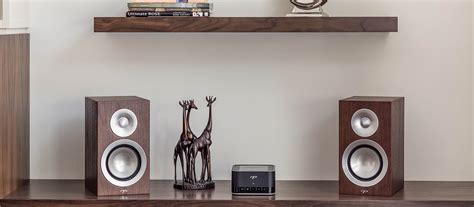More and more film-watching is being done at home. Streaming services bring us feature films within weeks or months of their theatrical release.
Yet, many people have not adjusted the sound space in their homes to maximize the film experience, especially the sound of voices, musical underscoring, crashes, bangs.
Here are some tips for anyone who wants to make a bit of effort to vastly improve the impact of streamed films or streamed content of any kind. And, plus, the 57th Super Bowl is right around the corner!
To make the biggest difference for the least amount of money take a look at your listening environment. The ideal environment will be as acoustically dead as possible. This means eliminating various reflections of the sound off walls, floors, and ceilings.
This can be achieved by eliminating reflections off flat surfaces by hanging fabric, the heavier the better, on the walls. These hangings are inexpensive but attractive hangings are harder to find. Once found, these should cover as much space as possible and be evenly spaced.
A more pleasing option are wooden sound defusing panels. These can also be either purchased or made, if you are a decent carpenter.
Ceilings are the most physically difficult to treat. The best treatment is known as a cloud and consists simply in hanging a sound damping wall hanging directly above the sweet spot and overhang it in length and width by at least one or two feet. A good dB meter is useful in finding reflective hot spots.
For most people, understandably, this is ‘a bridge too far.’
A room with no parallel walls is best. I say this knowing most wall in rooms are parallel. So this requires placing the TV and speakers at angles, of possible, to flat surfaces. By doing this you create an ideal listening spot (hereafter referred to as the “sweet spot”). This reduces reflective standing waves which will be out of phase with the sound produced by any sound source like a speaker.
Try to eliminate, as much as possible, all reflective surfaces. Reflective surfaces include sheet rock walls or ceiling and hardwood walls or ceiling and hardwood, or tile floors.
The floors are the easiest to deal with by the use of fairly heavy carpets, or rugs, all contributing to the acoustical deadness mentioned earlier.
Organizing your listening environment will enhance your enjoyment of music more than expensive speakers, amplifiers, phonographs, CD players, etc.
Another inexpensive improvement involves speaker placement. The primary, front stereo channels, should have speakers placed the same distance from the sweet spot — where you are sitting — as they are from each other. The same ideal applies to rear stereo channels.
Most people, I’ve noticed, sit too far away from their visual and acoustical source. For example, the ideal distance to sit from a 60’ television is eight feet.
Center channel speaker(s) should be as exactly centered between stereo channels as possible. The same applies to a sub woofer, if you have one. Placement of the sub woofer is the least sensitive. In my experience, the addition of an inexpensive sub-woofer will make you system sound five times better right away.
Acoustic placement also applies to phonographs (what we used to call “turn tables”). The phonograph should be mounted on damping feet on a heavy, vibration resistent surface. It should be as far as possible from any speaker, but especially from any sub woofer as vibrations can cause noise such as rumble and bad tracking (having the stylus skip out of tracks.
The same applies, though not as critically, to CD players. Keep any tape players such as cassette decks, or open reel, away from speakers to avoid magnetic damage to tapes.
Finally, the most important thing of all is enjoying good music and films in a comfortable, relaxing space. that will make the most of experiencing the beautiful.














